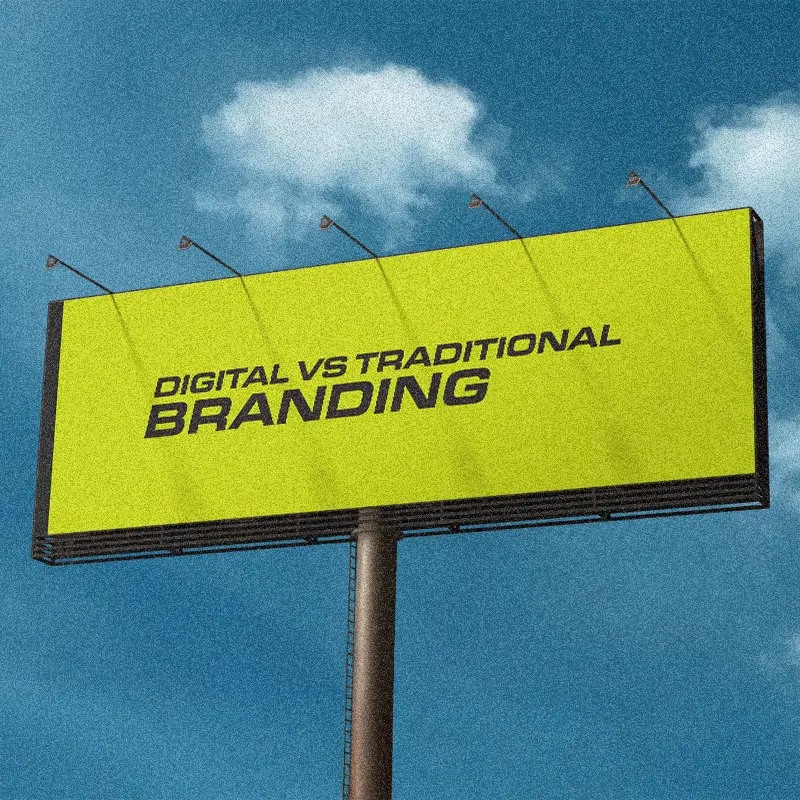



Traditional branding has roots in physical media such as print, radio, television, packaging, and outdoor signage. It builds recognition through repeated exposure in familiar environments.
Example: Coca-Cola’s iconic billboards and Super Bowl commercials have reinforced its presence for decades. The consistency of those campaigns created trust across generations.
For many businesses, especially those with local reach, traditional branding provides:
The tradeoff is cost and measurement. Traditional campaigns often require larger budgets, and it is difficult to directly track how many people respond after seeing a print ad or billboard.
Digital branding relies on websites, social platforms, paid search, and e-commerce ecosystems to create visibility and encourage interaction. Businesses can adapt quickly to customer behavior, monitor results in real time, and adjust budgets with greater flexibility.
Case in point: A direct-to-consumer apparel brand may rely on Instagram Reels, influencer campaigns, and retargeting ads to reach thousands of likely buyers for a fraction of the cost of a national TV spot.
Key strengths include:
The challenge is saturation. Online spaces are crowded, attention spans are short, and quality must remain consistent to stand out.
For example, a CPG company could pair in-store displays at supermarkets with paid search ads targeting shoppers looking for “organic snack delivery.” This approach connects with both everyday retail buyers and online consumers ready to purchase.
Many businesses see the strongest results by combining both methods. A consumer goods brand might launch a seasonal packaging campaign in grocery stores to catch shoppers’ attention, while running targeted Instagram and Google ads to drive repeat purchases through its online store.
This mix allows companies to keep the familiarity associated with traditional media while benefiting from the measurable efficiency of digital channels.
Choosing between digital branding and traditional branding is less about deciding which is “better” and more about finding what matches your goals, audience, and budget. For businesses with limited resources, digital approaches often provide quicker, trackable results. For organizations seeking broad recognition or credibility with specific demographics, traditional methods remain valuable.
The most effective strategy often lies in balance: know your audience, select the mix of channels that reach them, and invest consistently over time.
